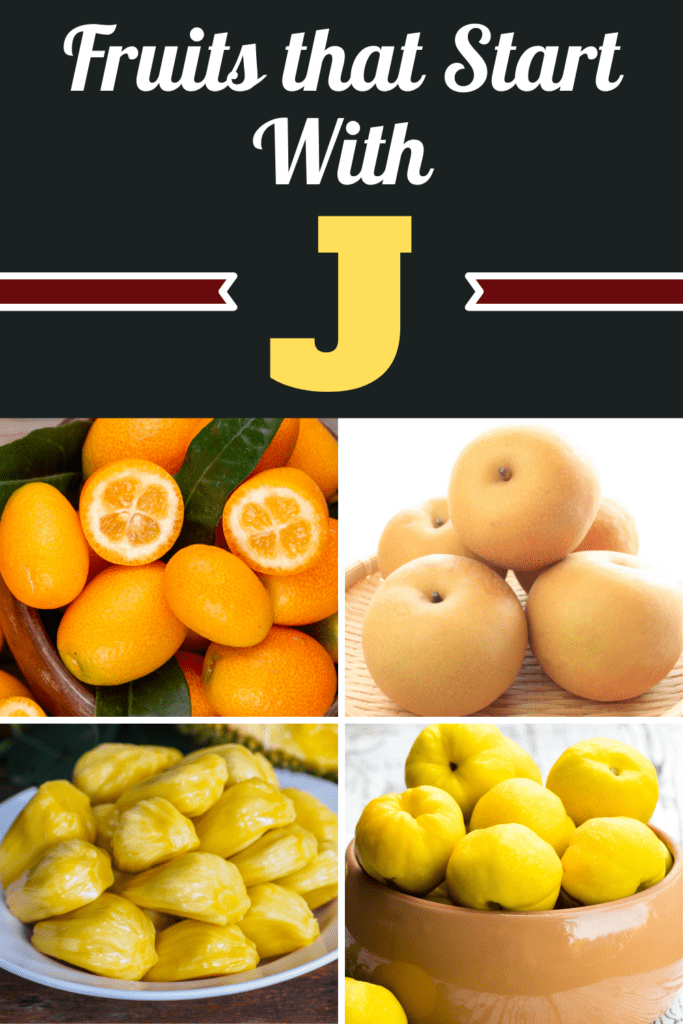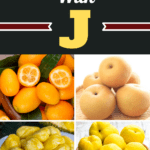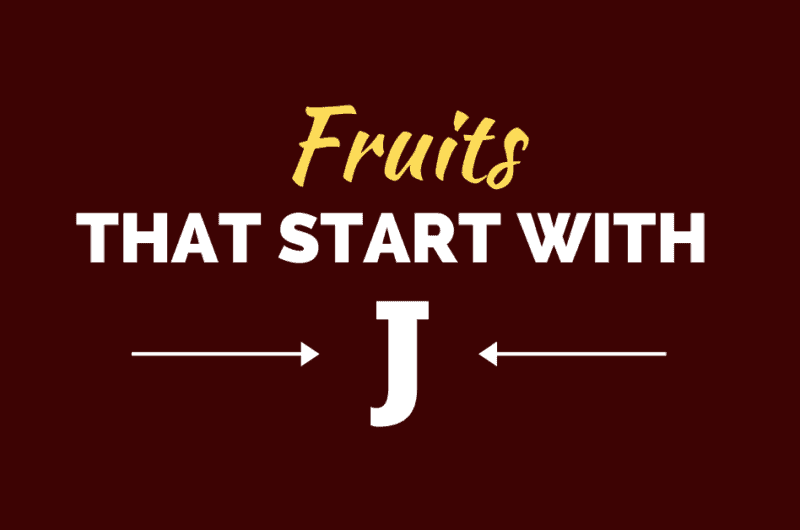Can you name 14 fruits that start with J? I decided to give it a shot.
And if it wasn’t for the many incredible Japanese fruits out there, this list probably wouldn’t have happened!
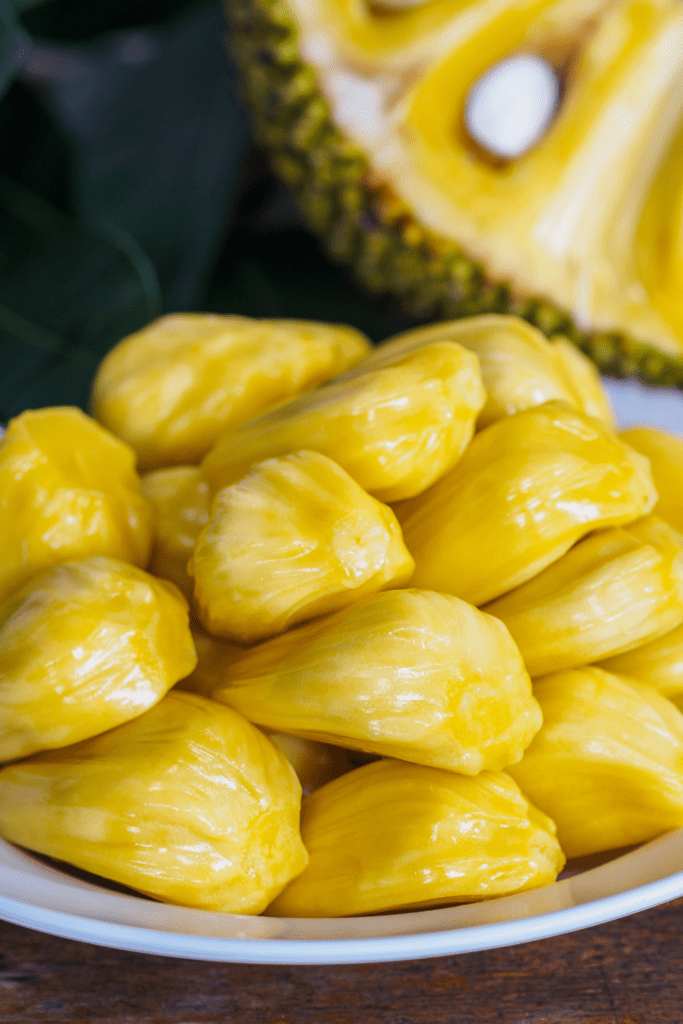
From Japanese pears and sweet peaches to quinces, Japan saved me when it came to ‘J’ fruits.
Even so, I had a lot of fun making this list.
Plus, it contains one of my favorite fruits of all time, the jujube fruit. If you haven’t tried it, I highly recommend it.
Now, let’s take a look at a few other fruits that start with J.
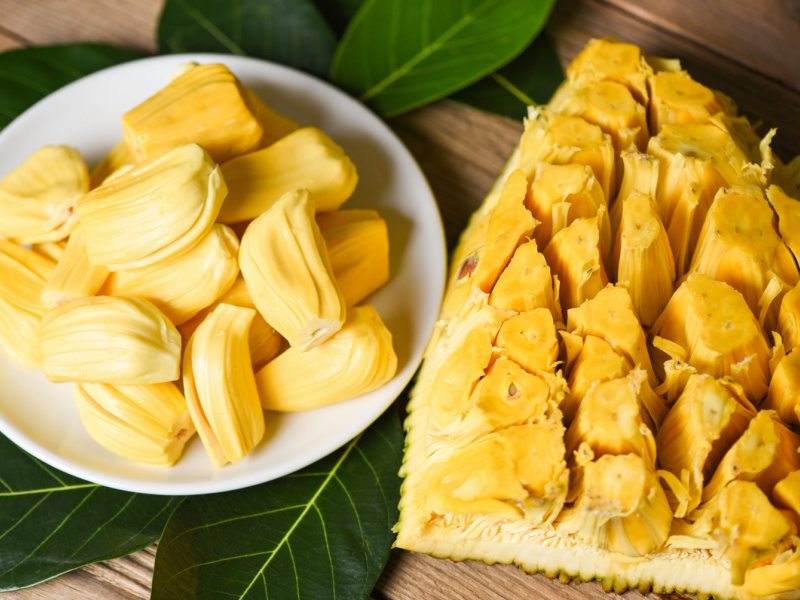
1. Jackfruit
Jackfruits are large, melon-sized fruits that, believe it or not, are related to figs.
Jackfruits are the largest tree-growing fruits in the world, and some of them can weigh up to 100 pounds!
They’re covered entirely in funky, spiky protrusions and range in color from light green to brown, depending on their levels of ripeness.
The insides are off-white to yellow, and there are plenty of large, edible seeds inside.
The flavor is odd but delicious. It’s a uniquely sweet taste that’s unmatched by any other fruit.
Under-ripe jackfruit, on the other hand, has a mild, almost bland flavor. And it’s great in a ton of jackfruit recipes for vegans.
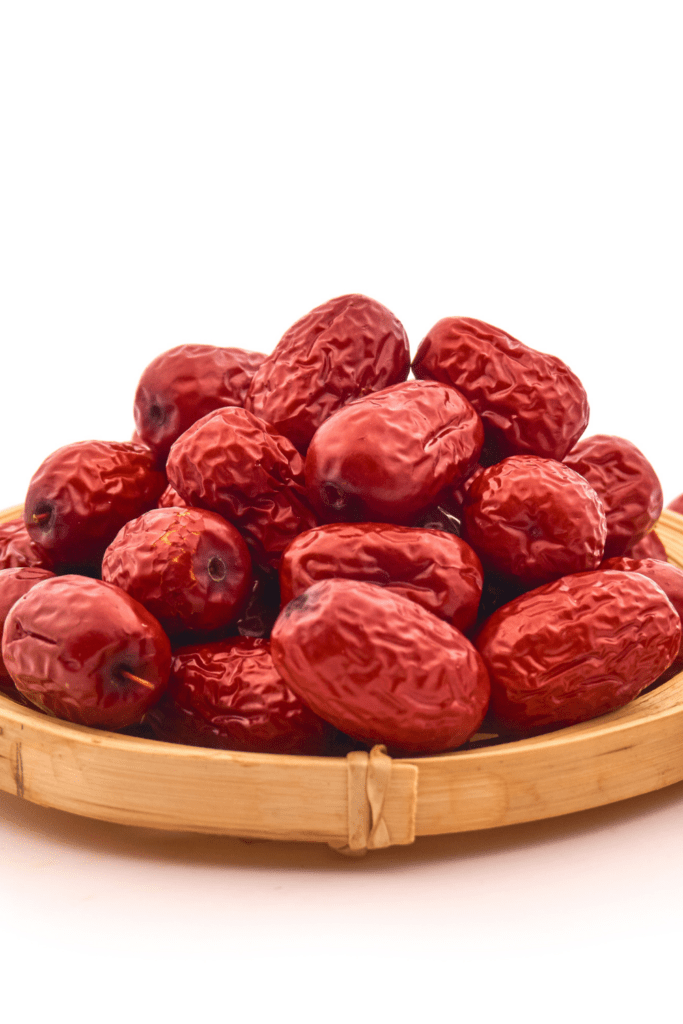
2. Jujube Fruit
Jujube fruits aren’t super common in the Americas, but they’re found all over the Eastern world.
Chinese people have eaten them and used them in their medicines for centuries.
They’re reputed to have a calming, relaxing effect, and although I can’t swear that it’s true, I always get happier after eating them!
There are a few different varieties of jujubes, but my favorites are the large, round ones. All three are edible, though. You can eat them raw or dried.
If you eat them raw, don’t wait until they ripen fully. If you do, they’ll be a little too dry to taste good.
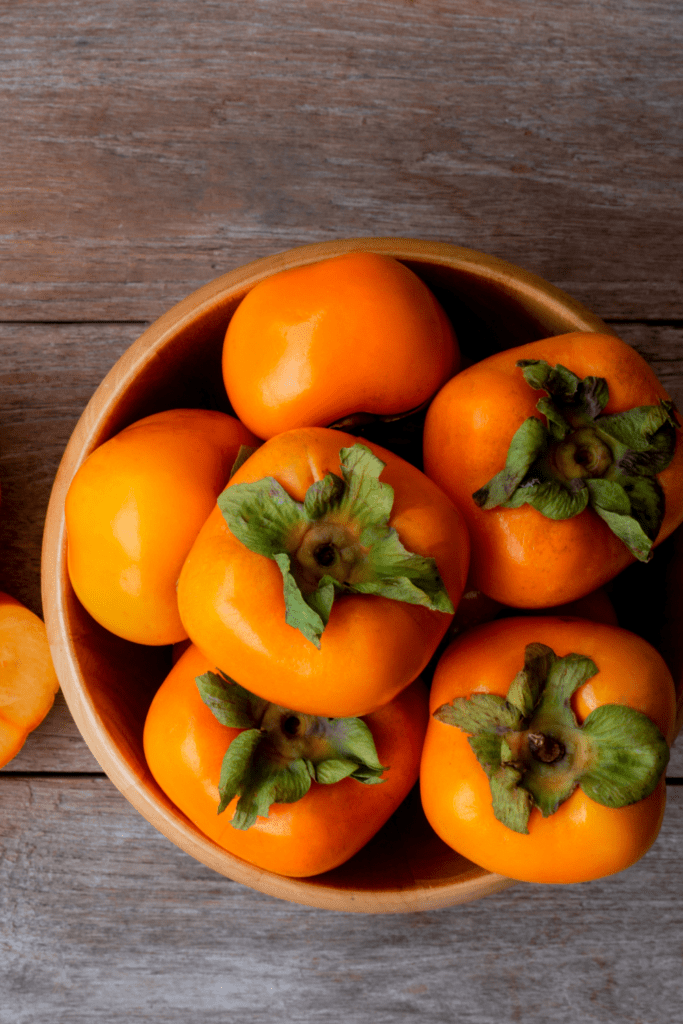
3. Japanese Persimmon Fruit
When ripe, Japanese persimmons look remarkably like strange tomatoes.
You can eat them raw, but if you bite into one that isn’t quite ripe, you’ll regret it. They’re very bitter.
Like most types of persimmons, when ripe, they have a smooth, silky texture and a unique taste.
It’s somehow sweet, spicy, and just a tiny bit cinnamon-y all in one. You can also dehydrate them.
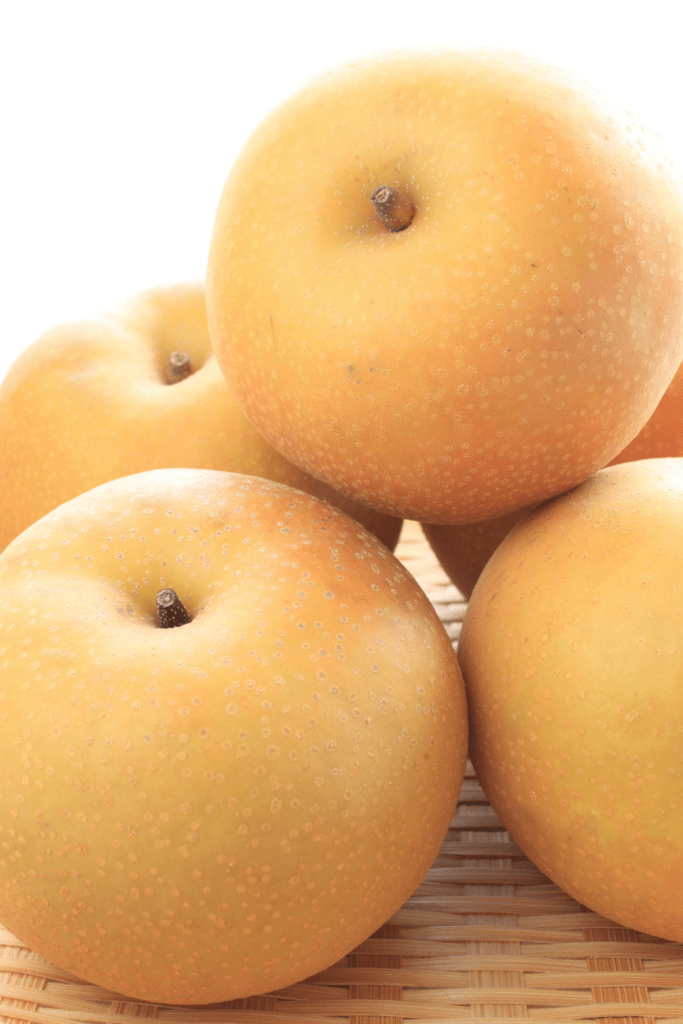
4. Japanese Pear
More commonly called Asian pears, Japanese pears are the most populous fruit in Asia.
They’re crispier and sweeter than Bartlett or Anjou pears, and they’re shaped like apples.
When fully ripe, they’re light brown or dark yellow. Some appear to have spots, and all are high in lots of vitamins and minerals.
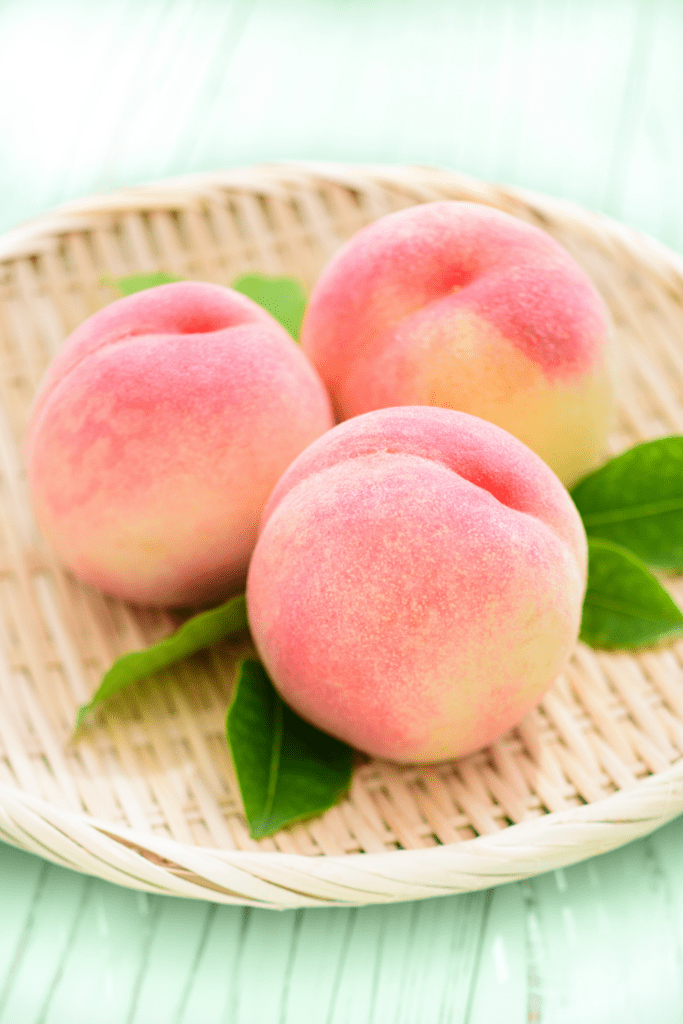
5. Japanese Peach
Japanese peaches, or momos, are pretty similar to the peaches we’re used to in the West. However, they’re a little bigger and softer.
Other than the size and feel of the peaches, their outsides look mostly like our “normal” peaches.
The inside, though, is paler in color. It’s almost white.
As you can with Georgia peaches, you can eat these with or without the fuzzy skin.
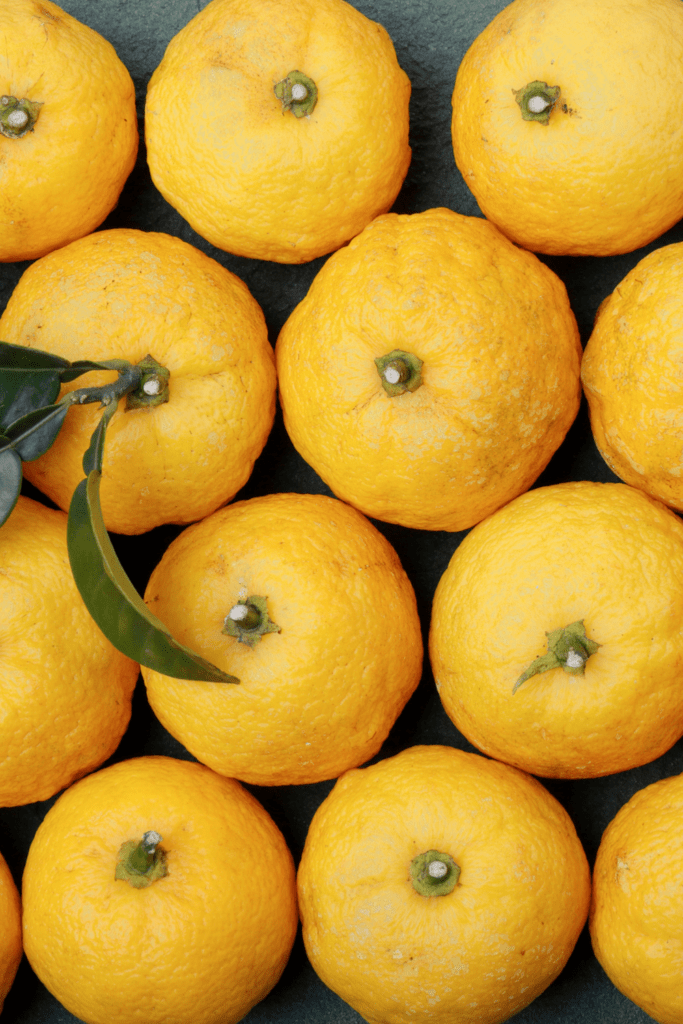
6. Japanese Yuzu
Yuzu look like round lemons, and people love them more for their incredible scent than their taste.
The taste is somewhere between that of a lemon and a grapefruit, but people rarely eat them. Like lemons, yuzu are used to flavor dishes.
You can use their juice for flavor or their rinds to make zest.
People in Asia frequently use yuzu to scent their baths, perfumes, and other aromatherapy products.
7. Jelly Palm Fruit
More commonly known as palm dates, jelly palm fruits are orangey-yellow, and from a distance, they look like tiny oranges.
However, up close, their texture is entirely different. It’s smooth, like the skin of a ripe tomato. They grow in clusters and taste tropical and sweetly tart.
You can eat them straight off the tree. However, most people use them to make jelly, which is how they got their name.
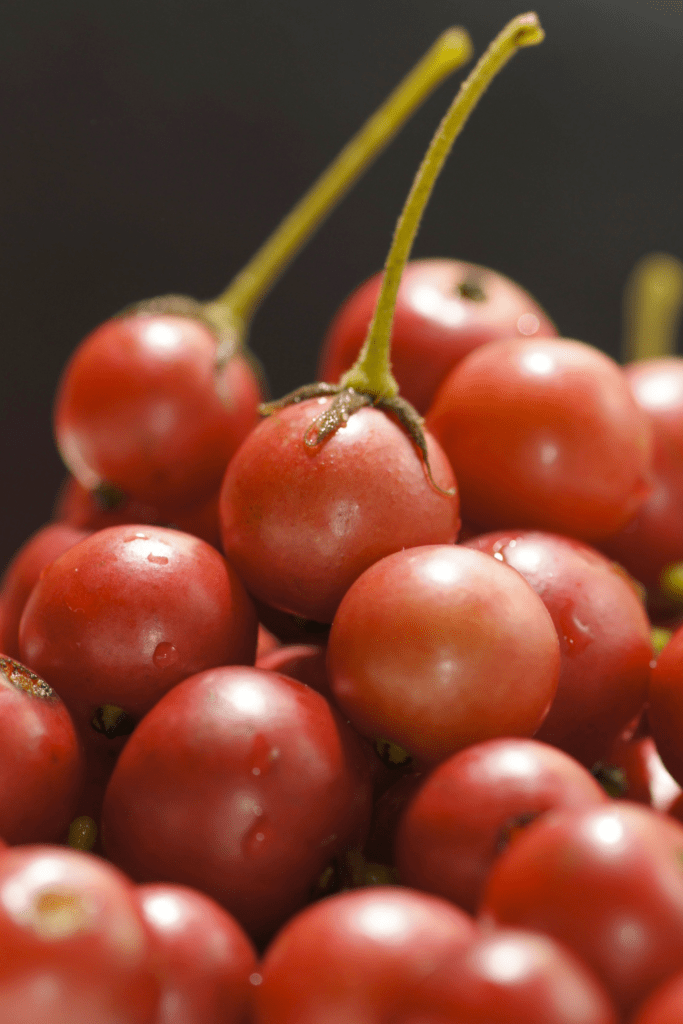
8. Jamaica Cherry
Jamaica cherries grow abundantly on their trees.
They’re about the same size as the cherries you’re used to eating.
Depending on their current stage of ripeness, they can be green, yellow, light brown, red, or peach-colored.
They have tiny seeds that you can safely eat while enjoying the cherries, and they taste a little like figs.
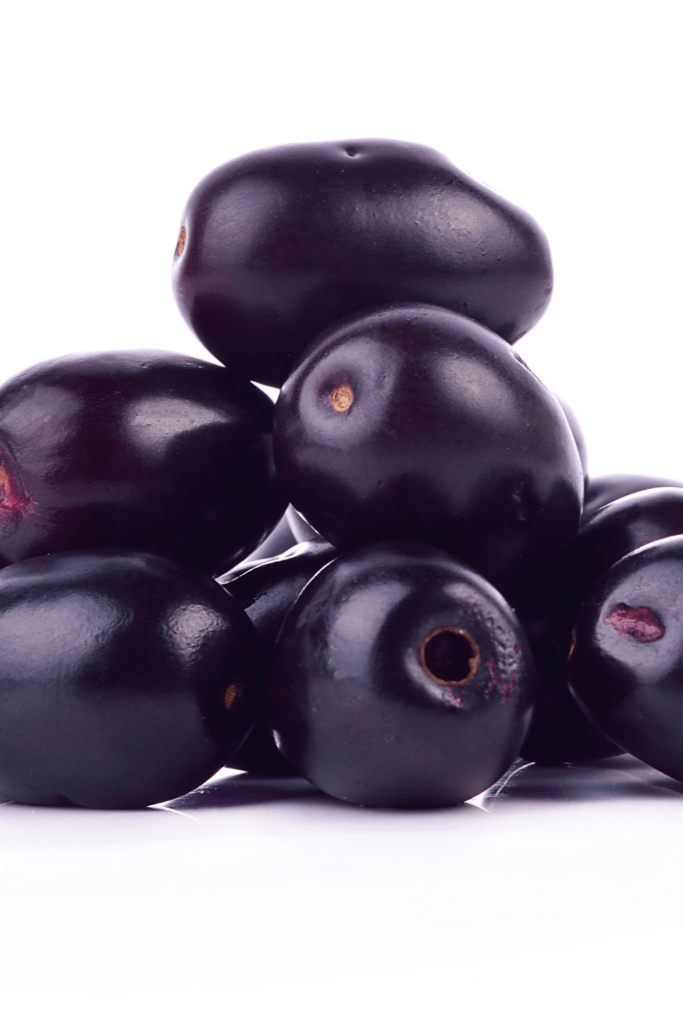
9. Java Plum
From the outside, java plums look like elongated grapes. They’re a deep purple, nearly black, and their insides are translucent white/purple flesh around an off-white seed.
Both the plums and the seeds are edible. The plums taste tangy, bordering on bitter, but they’re not unpleasant, especially when salted.
The seeds have little taste but are high in nutrients.
10. Jamaican Tangelo
Jamaican tangelos are the hybrid offspring of grapefruits and tangerines (or oranges). They go from light green when unripe to mostly orange when ripe.
They’re usually larger and much sweeter than grapefruits.
They’re not quite as sweet as the tangerines/oranges from which they originate, however. They also have few seeds.
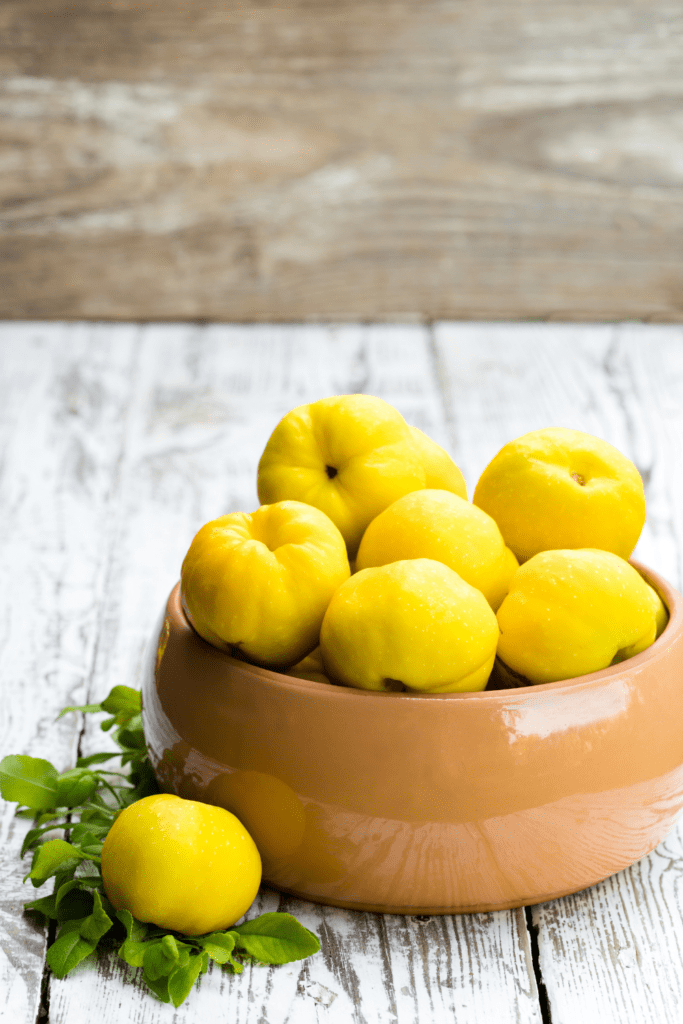
11. Japanese Quince
Although Japanese quince fruits are edible, most people plant them for their beautiful red flowers, not their fruit. The fruits are the size of apples and yellow-gold.
Because these fruits are bitter and hard, most people don’t eat them raw. They use them to make pie fillings, jelly, and jam instead.
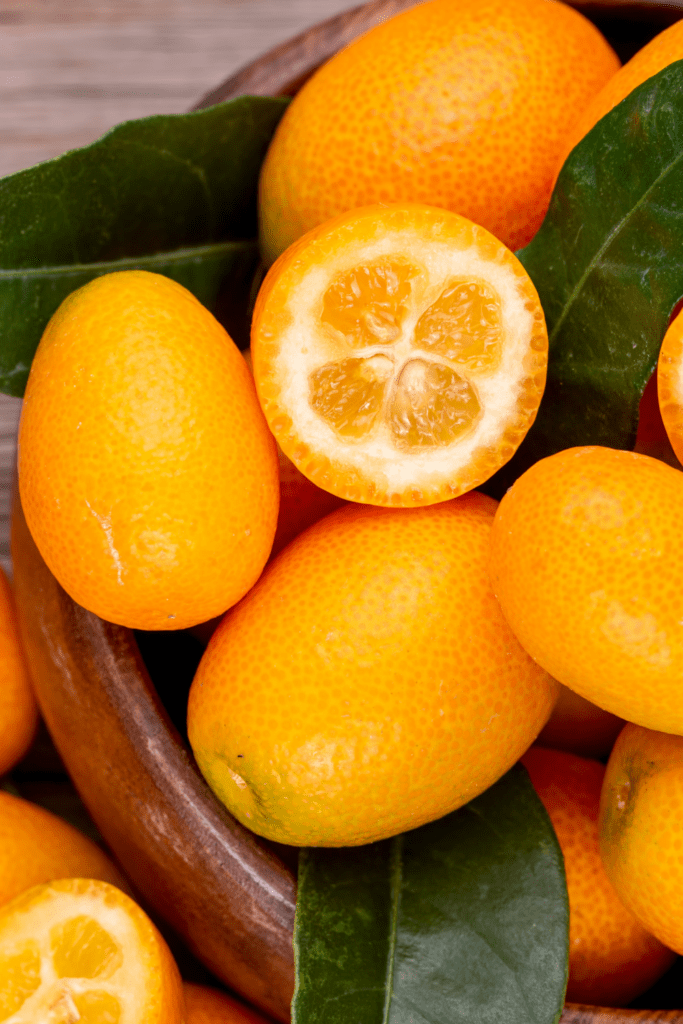
12. Jīn Jú
Jīn jú is the Chinese word for kumquat. Kumquats are citrus fruits that look like small oranges, but you can eat them without peeling them, unlike oranges.
They’re slightly sour, but not so sour that they taste nasty or bitter, and people frequently eat them raw.
Kumquats are also used to make sweet liqueurs, marmalades, and jams.
13. Jamaican Plantains
Plantains have become pretty popular in the United States over the last several years.
They’re tropical fruits that look like longer, greener bananas, but they aren’t sweet like bananas.
Instead, plantains are usually used in savory dishes and are rarely eaten raw.
That said, they get sweeter as they’re cooked, as you’ll see in these plantain desserts.
Oh, and if you’re curious about them, check out this post ‘plantains vs. bananas’.
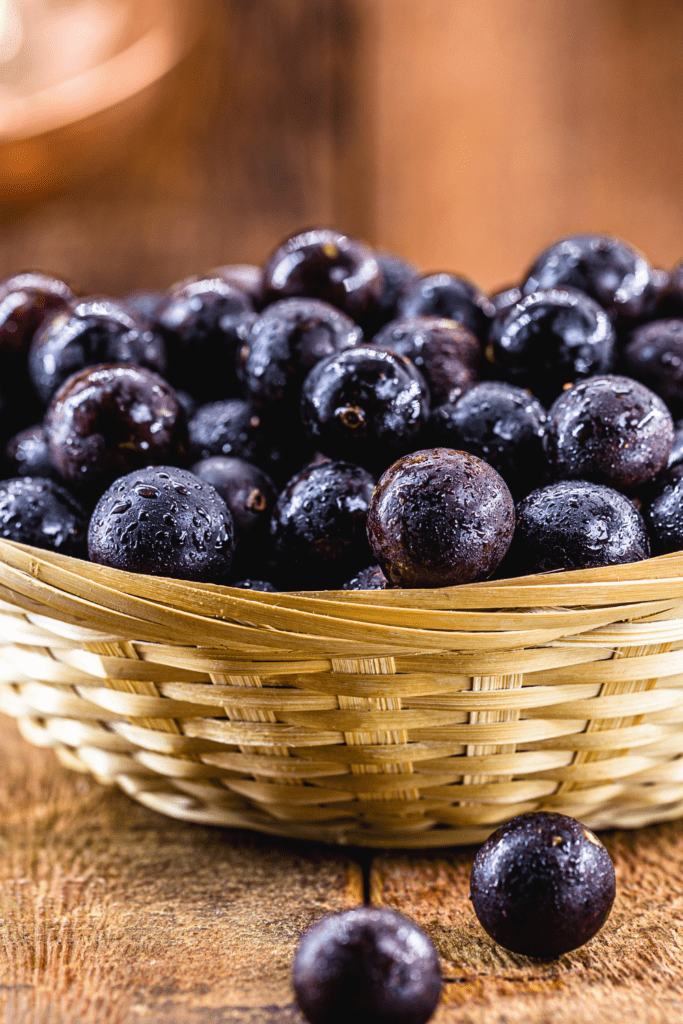
14. Jaboticaba
Jaboticaba trees are native to Brazil and its surrounding areas, and the fruit they produce is small, deep purple, and round.
They look so much like grapes that the tree is often called the “Brazilian grape tree.”
They have an almost candy-like taste that reminds some people of a more sour version of lychee.
